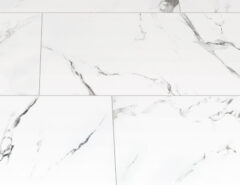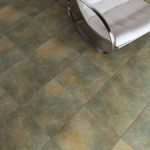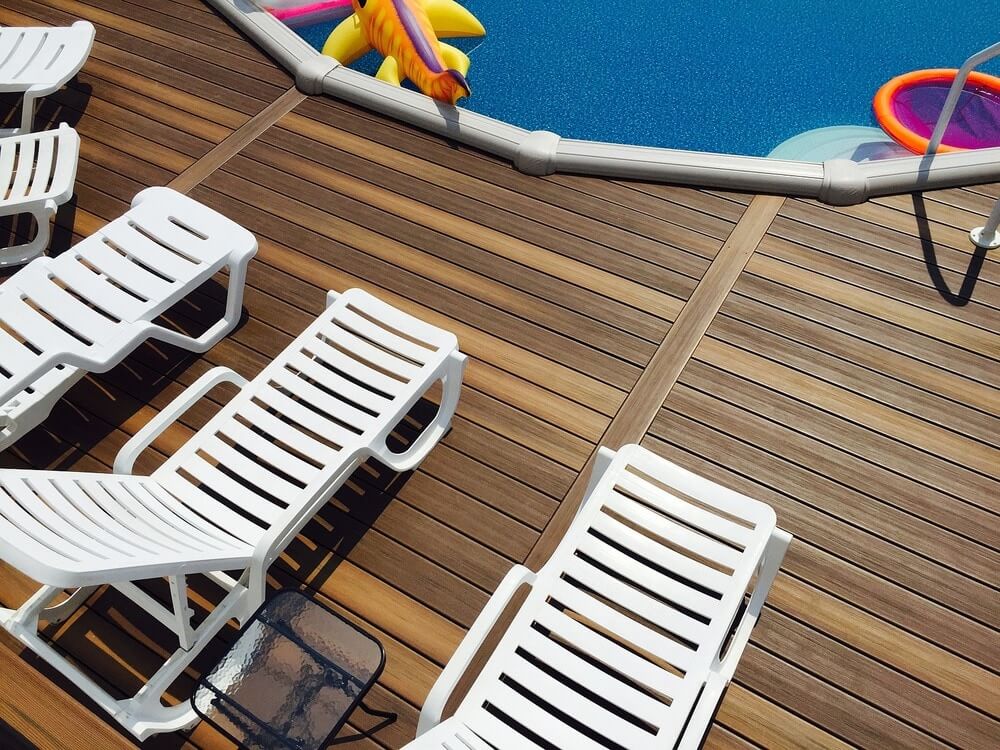
It’s summer, which means it’s time to think about the ways you can make your home pool secure for all swimmers. Regardless of whether it’s a play zone for the kiddos or a place for you to get in a few dozen laps each morning, it’s critical to ensure that you have the safest type of flooring surrounding your pool with a non-slip outdoor surface. Check the top three choices for pool decks ranked by safety, plus some great benefits and tips for each option.
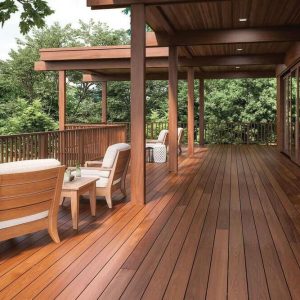
2nd Place: Decks
Wood and composite decks are popular options when it comes to creating outdoor pool decks. There are certainly some appealing factors when it comes to wood or composite, including the lower price point. Of course, not all wood options are made equal; while pine is inexpensive, teak is more expensive yet also more durable. Meanwhile, composite decks might cost a bit more but typically don’t require waterproofing and other upkeep required for wood.
While you might be attracted to the natural, rustic beauty that comes with wood and composite decks, they’re unfortunately more dangerous than other pool deck options. Wood and composite can both become slippery when wet, increasing the risk of slips and falls. Even if you purchase top-quality lumber, there’s no getting around the fact that it could make your pool a little less safe for adults and kids alike. Choosing a textured surface over composite or wood decking is a better choice.
1st Place: Tiles
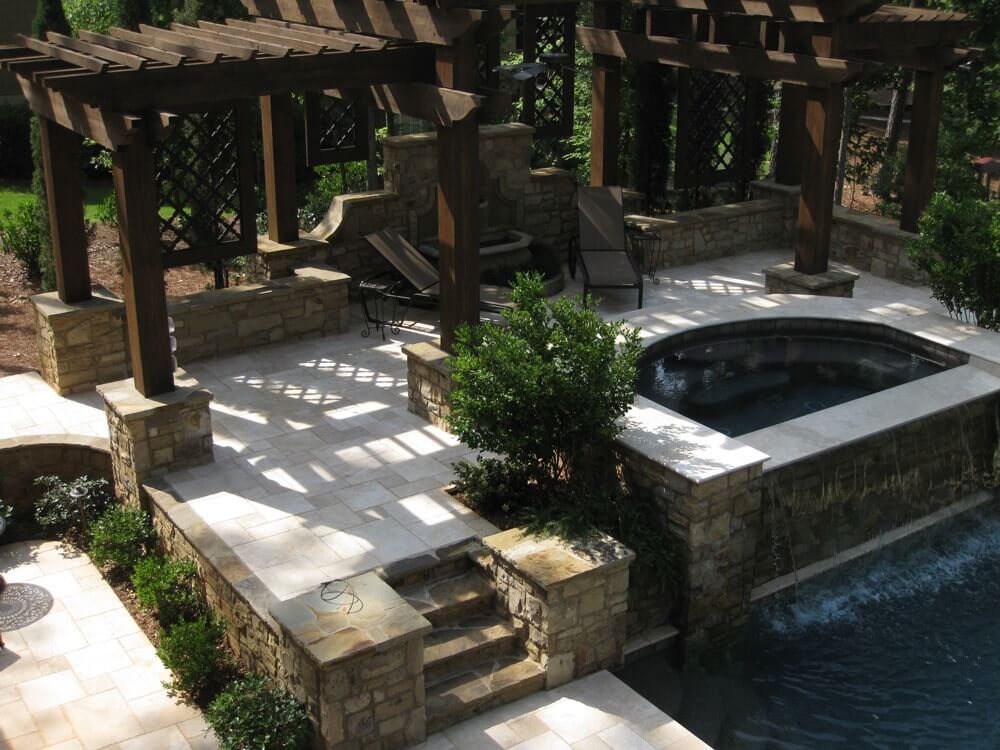
Are you considering using tile for your outdoor pool deck? This versatile flooring option can look absolutely stunning in an outdoor setting. Tiles come in a wide range of styles, colors, and designs, so it’s certainly the best choice if you want something that’s highly customizable. However, many tiles have a slick surface that becomes slippery at the slightest hint of moisture, making them unsuitable for use near a pool. Because of this, you’ll want to avoid using any type of polished natural stone, such as glazed ceramic, marble, or porcelain tiles.
The good news is that a few types of tile do work well for use around outdoor pools. Slate and honed travertine tiles have a textured surface that won’t become as slippery as polished tile. In addition, they look stylish and can be customized in a variety of patterns and designs. Many people also incorporate these tiles into outdoor pathways leading to the pool or into an accent border around the edge of the pool.
Be forewarned that tile typically needs to be sealed to protect the grout from cracking over time. You’ll also want to double-check that you’ve chosen tiles specifically made for outdoor use and can withstand freeze-thaw cycles if you live in certain climates.
Honorable Mention: Concrete
If you’re looking for pool deck flooring options that meet your style standards, concrete might not be high on the list. It’s not nearly as customizable as tile or pavers since the color and pattern options aren’t as varied. Plus, it may not offer the upscale look you’re going for.
That being said, concrete is another safe option for pool decking if it’s installed correctly. Smooth concrete will be slippery when wet, so this type of pool deck must be installed with a special finish to add traction and have it become a non-slip outdoor surface. Broomed and exposed aggregate finishes can add a bit of extra texture to the surface for this purpose, or a textured overlay or a sealer with clear plastic grit can be applied to create a slip-resistant surface.
Keep in mind that concrete does require occasional cleaning and resealing to maintain its appearance. However, it is one of the more economical choices in terms of price, and some concrete companies offer a variety of options when it comes to adding patterns or colored overlays to the surface for a more stylish look.
Pool Deck Safety Tips
Looking for other ways to improve safety around your pool? Here are a few more tips to keep in mind during #SafeSwimmingWeek:
- Add a fence around your pool. Unfortunately, the lack of barriers around outdoor pools results in hundreds of deaths each year. Installing a fence reduces the risk of an accidental drowning and keeps children and intruders from gaining unsupervised access.
- Use self-closing, self-latching gates. As with a fence, a gate reduces the risk of little ones falling into the pool while unsupervised. This type of gate ensures that the pool is closed off when people are coming and going.
- Install a pool cover. When the pool isn’t in use, a pool cover protects from accidental drownings while also keeping out debris.
- Use a motion sensor or alarm. This additional layer of protection is especially useful for parents with small children who may wander into the pool area.
Creating a safe pool deck will allow you to relax and enjoy your pool to the fullest. In honor of #SafeSwimmingWeek, reconsider your current pool deck surface for a non-slip outdoor surface and other safety measures around the pool to make sure you’re doing everything you can to keep you, your family, and your guests safe.
Resources:


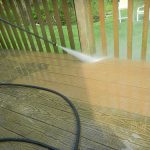
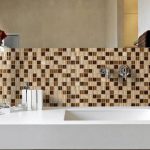









 (2 rating, average rating is 3.50/5)
(2 rating, average rating is 3.50/5)


